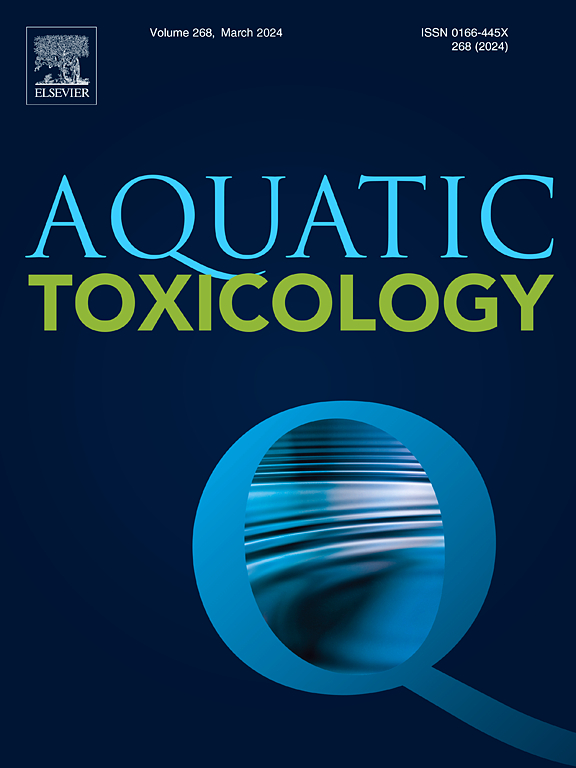First insights into aliphatic and polycyclic aromatic hydrocarbons (PAHs) in hawksbill turtle (Eretmochelys imbricata) eggs from Persian Gulf, Iran
IF 4.1
2区 环境科学与生态学
Q1 MARINE & FRESHWATER BIOLOGY
引用次数: 0
Abstract
Petroleum pollution in marine ecosystems has raised great concern for both marine organisms and human health. The Persian Gulf, as a significant hotspot of petroleum pollution, is a crucial nesting area for hawksbill turtles (Eretmochelys imbricata) worldwide. In this work concentration level, source, and compositional profiles of polycyclic aromatic hydrocarbons (PAHs) and normal alkanes (n-alkanes) were analyzed in the yolk, albumen, and shell of hawksbill turtle eggs collected from 3 nests on the Persian Gulf coast of Iran. Twenty-eight PAHs and 19 n-alkanes were detected in samples. The highest levels of ƩPAHs and Ʃn-alkanes were found in yolk samples compared to the albumen and shell, possibly due to the high lipid content and lengthy duration of yolk formation. Comparable levels of pollutants were found in eggshells, indicating the potential for turtle eggshells to accumulate organic pollutants. The source of PAHs and n-alkanes in all samples primarily indicates petrogenic, suggesting extensive oil-producing activities and petroleum pollution in the Persian Gulf. Inter-nest variations in levels and profiles of PAHs and n-alkanes were observed in the eggs from the 3 nests, which might be related to the turtle's diets and migration patterns. Although this study provides the first monitoring data on organic pollutants for sea turtles in the Persian Gulf, more complementary researches are required in terms of monitoring petroleum biomarkers in foraging grounds, maternal blood, and their eggs in this region.

求助全文
约1分钟内获得全文
求助全文
来源期刊

Aquatic Toxicology
环境科学-毒理学
CiteScore
7.10
自引率
4.40%
发文量
250
审稿时长
56 days
期刊介绍:
Aquatic Toxicology publishes significant contributions that increase the understanding of the impact of harmful substances (including natural and synthetic chemicals) on aquatic organisms and ecosystems.
Aquatic Toxicology considers both laboratory and field studies with a focus on marine/ freshwater environments. We strive to attract high quality original scientific papers, critical reviews and expert opinion papers in the following areas: Effects of harmful substances on molecular, cellular, sub-organismal, organismal, population, community, and ecosystem level; Toxic Mechanisms; Genetic disturbances, transgenerational effects, behavioral and adaptive responses; Impacts of harmful substances on structure, function of and services provided by aquatic ecosystems; Mixture toxicity assessment; Statistical approaches to predict exposure to and hazards of contaminants
The journal also considers manuscripts in other areas, such as the development of innovative concepts, approaches, and methodologies, which promote the wider application of toxicological datasets to the protection of aquatic environments and inform ecological risk assessments and decision making by relevant authorities.
 求助内容:
求助内容: 应助结果提醒方式:
应助结果提醒方式:


